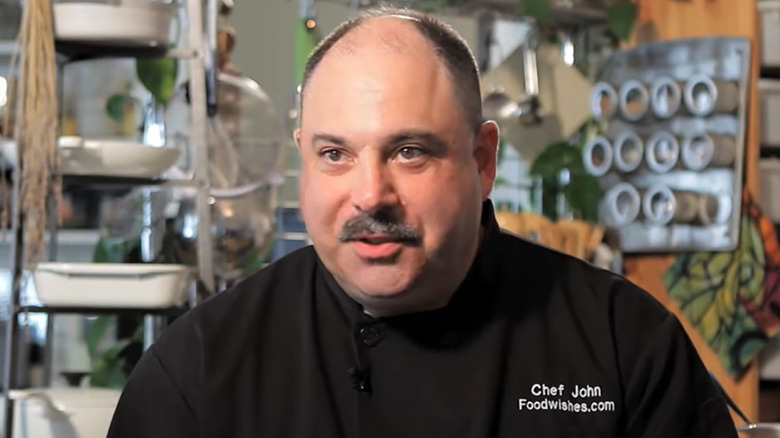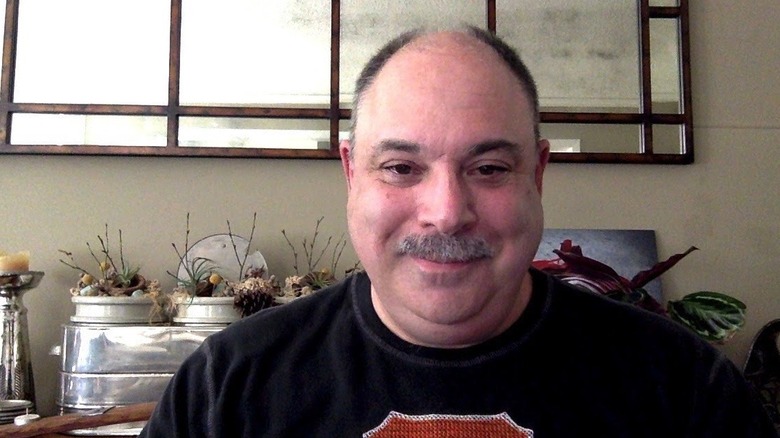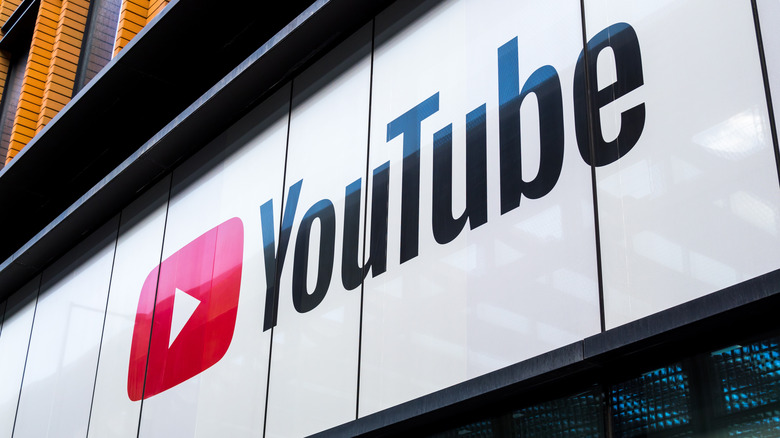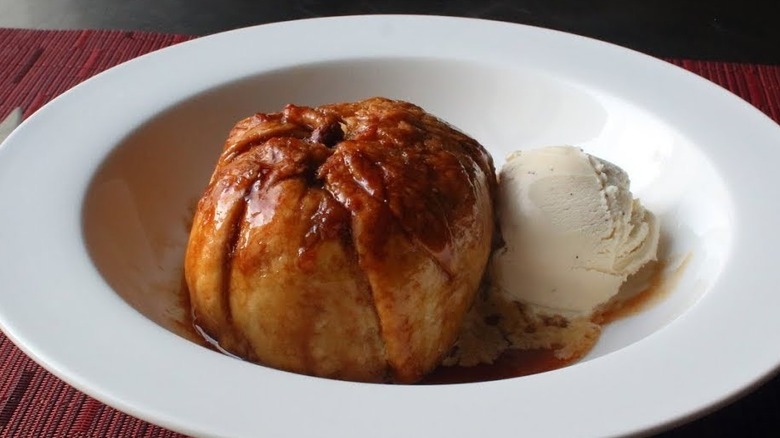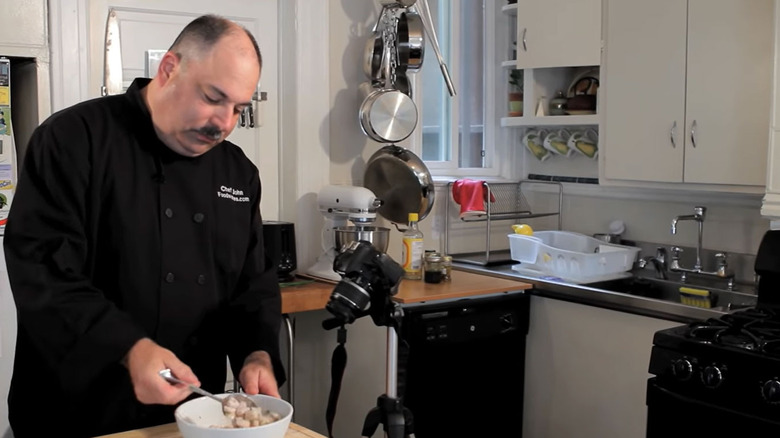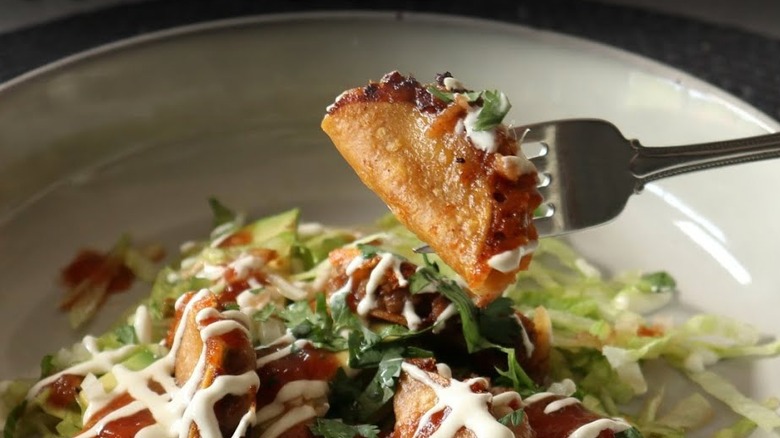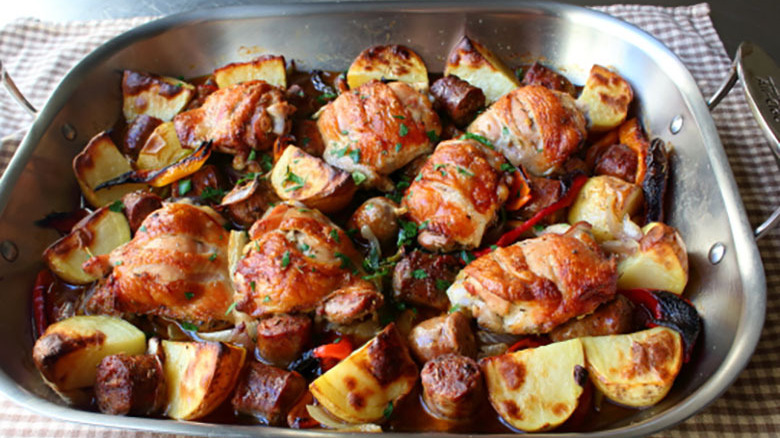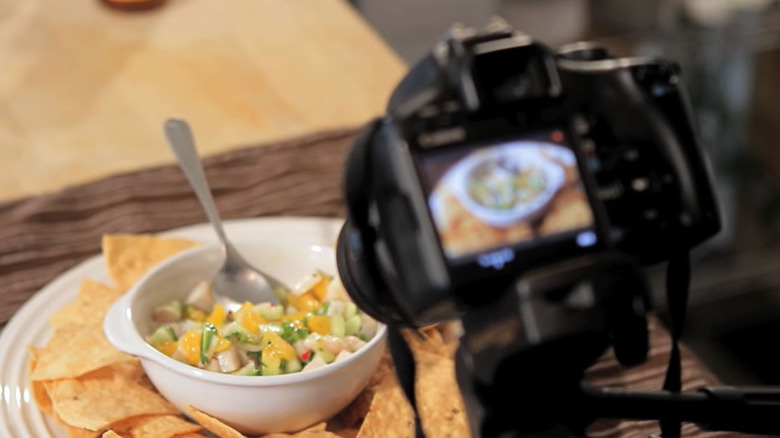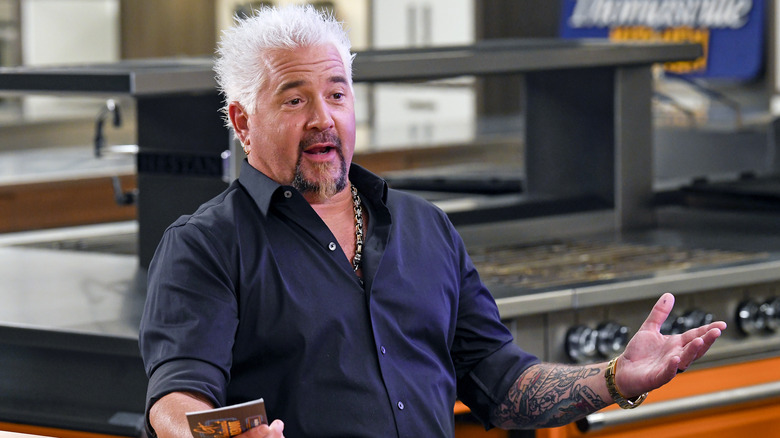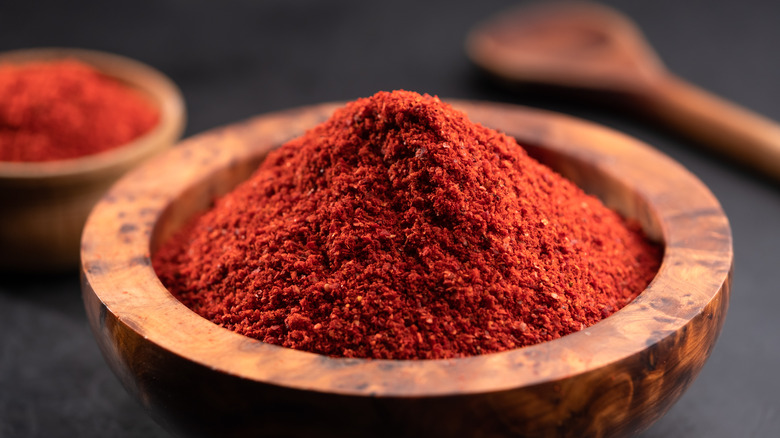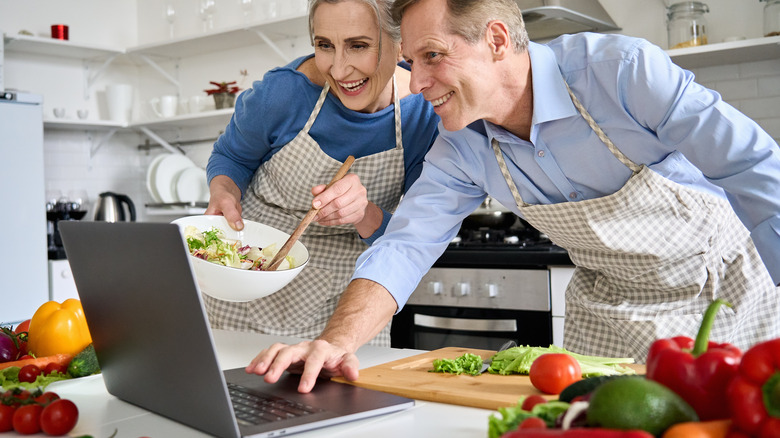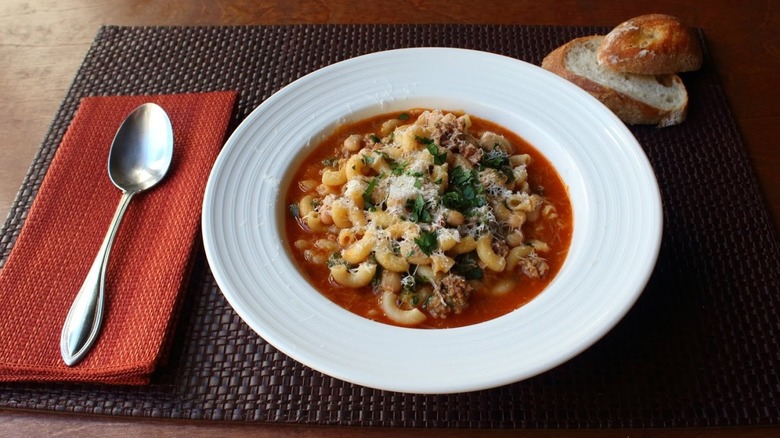Chef John Tells All About Food Wishes And Reveals His Best Cooking Tips - Exclusive Interview
We may receive a commission on purchases made from links.
Anyone who has spent much time following the career of John Mitzewich, better known as Chef John, creator of the popular YouTube channel "Food Wishes," knows that the chef is a pretty laid back guy. His online cooking videos, which Chef John and his wife, Michele, have been producing for well over a dozen years, never feature the chef himself beyond a view of his hands as he does the prep and cooking. He's not a voracious social media poster, with an entire week often passing by without a new Instagram post.
But don't get the wrong idea about Chef John, because if indeed you have followed his career, you know two things about this man: First, he knows food through and through. That's thanks to years of experience working on his own recipes, most of which are inspired by viewer requests (the "wishes" part of "Food Wishes," see?) for help with this or that recipe. And two, you know that despite his casual demeanor, this gent is a heavy hitter: his YouTube channel has well over four million subscribers and is still growing, he has authored cookbooks, won awards, and he's generally carved out a large slice of the cooking media world for himself, and all by the work of his own hands. There has been no "MasterChef" or "Hell's Kitchen" or "Bake Off" appearance to rocket Chef John into the mainstream, rather there's just been one recipe after another, week after week, picking up new channel subscribers along the way.
John Mitzewich's success is no surprise, looking back, as pleasantly surprised as he seems with how well his culinary life has worked out: one way or another, this guy was going to work with food.
Chef John talks about his early culinary career
Where did your interest in cooking start? And when did you know it would become more than just a hobby, but in fact a career?
Well, the interest started following mom and grandma and aunts and grandparents and dads around the kitchen. Everyone was really into food in my family, both sides. So that's where the interest started. It always seemed to be the center of the house, everyone hanging out in the kitchen and always loving food. And it was always a big part of life growing up and all the happiest moments and so forth. So I think from an early age, that's what sort of started my interest in cooking in general.
Then you get to a certain age and you realize, oh, people do this for a living. And I was always a big fan of the early cooking shows, Julia Child and "Galloping Gourmet" and all the old classics, the first wave of that. I remember mom telling me, "Go outside and play!" And I'd be on the floor watching a public — well, I think it was only on public television back then, obviously no Food Network back in the day — but anyway, yeah, from an early age, [I was] always interested in cooking, always liked watching cooking shows. And then in high school, [I] started thinking about what do you want to do and college and so forth, and I heard about something called a culinary school. And that's sort of where it became like, huh, maybe I'll do this for an actual job.
I did, in high school, have a few jobs like working in pizza shops and dishwashing in certain restaurants. So I got a little taste of the business and kind of the hustle bustle, the excitement. And so it was just a combination of doing that just for spending money in school and then eventually checking out some culinary schools and thinking, you know what, I could do this for a living and not have to get a real job. This is how I used to joke around about. But anyway, it's kind of a typical story — a lot of chefs, I think they come [from] the same kind of background. Usually, it's a family thing and then it's an "I don't want to do any of the other jobs and I already kind of like this and I like the vibe of the kitchen and the vibe of the restaurant, let me see if we can do this" thing. So that's how I got to culinary school, basically.
Did you go to college to study something else and then just decided to cook instead?
I went to a college called Paul Smith's College. It's in the Adirondack Mountains of New York, near Lake Placid. And [it] actually had a culinary program. It was a weird college. It was like half the college is environmental technologies, forestry, and then the other half's a hotel restaurant school. So it was really a strange mix of students, the most outdoorsy types and then the most indoorsy types all mashed together. And it was funny, both groups wanted to be the other group, at least socially. All the hotel kids dressed in lumberjack outfits and the lumberjack kids were trying to put on their Izod and look preppy. It was kind of a weird campus.
But anyway, they had a culinary chef training program, they called it. They were a fairly well-known hotel restaurant school for years and then they developed a new chef training program. And I was in the first class of that, the first year they did that. So yeah, it was a regular two-year culinary degree, associate degree. And I went on from there.
How Chef John made the jump into the online video space
When did you start to decide to start producing online videos?
Well, that happened over a very long period of time, relatively slowly. I did the cook thing and then chef thing and then catering thing and did all the jobs in business or in the industry that you can pretty much have. Did that for awhile. And then I kind of hit a stage where I was into a little more entrepreneurial era of my life. I tried doing some desktop publishing. When I was a sous chef at the Carnelian Room, I used to help cooks with resumes, because I was the one that interviewed a lot of the new employees ... So I had this idea that, as a little side business, I would specialize in designing, developing, and printing resumes for cooks and food professionals, just as a sideline.
And that kind of took off. I was making almost as much doing that as cooking, which is, especially back then, not a very highly paid profession. So that kind of got me out of the kitchen a little bit. I started getting into some graphic design. And these are the earliest days of desktop publishing, like the first Apple computers, the first dot matrix printers, and so forth. And then one thing led to another and a friend of mine worked at the Culinary Academy in San Francisco and he said, "You know, we've got these new classes starting up. We're actually going to be doing business classes, teaching students how to do Excel and Microsoft Word and how to do resumes, how to interview. And we're looking for someone that has that experience, but also a culinary degree and was an actual chef."
Which was kind of a weird combination of skills. So I had the perfect resume for this position. So I went [to the] interview and ended up at the Culinary Academy. I worked there, I think it was like four years. And then during that time ... that's right when YouTube sort of started up and half the class is not listening to the lecture, they're trying to sneak onto YouTube to watch something, someone skateboard or a cat, or even back then, cooking, though there were so few food things on there then.
And I just kind of was thinking ... "They're in the class, but they're actually watching TV to learn this stuff. And they all want to be on YouTube anyway." So I was thinking maybe I'll go off on my own and do like a video culinary school online. And again, this is like web 1.0, and I quickly realized people didn't want to pay for content online. They loved the content, they want it, but they don't want to pay. I figured if the Culinary Academy is charging you $40,000 for a degree, I'll just charge a few thousand and teach them the same things with video and everybody wins. And then I realized that probably wasn't happening. But as I was in the process of failing at that idea, I had been producing these, I'll say, practice videos. I was doing like one, two, three recipe videos a week on YouTube. I only found YouTube because it was the only way back then you could publish a video for free. They were hosting the video. I was like, "Wow, what's the catch?"
So that's how I got on YouTube. Because it was the only way I could share these instructional videos as I was hoping they would take off into some kind of online culinary school. And then one thing led to another and I got a couple of letters from people at YouTube saying, "Hey, we liked the video. We'd like to make you a content partner." Funny enough, I thought it was spam. I ignored all their emails and calls. Back then, a human used to actually call you. Like, "Hey, this is so-and-so from YouTube."
Chef John grew his YouTube presence steadily over the years
How did "Food Wishes" become a success?
Well, eventually it got through my thick skull that this was not a scam. [YouTube] actually wanted to share revenue from ads off the channel. And I had only had a few, maybe 10k or 20,000 subscribers back then. But anyway, that was the start. So I was no longer at the Culinary Academy. I was trying to do my own thing online and it kind of just took off on YouTube. Back then, everybody on YouTube cooking was doing videos like ... they almost looked like they were trying out for "Top Chef." It was always someone in front of the camera trying to show off their wild and crazy personality. And it wasn't really about the food as much as the performance. Everybody looked like they were doing an audition reel.
And I didn't have any equipment. I didn't have wireless mics or anything, I just had this old LogiTech web eye you used to put on top of your laptop. I had that strapped to a spice rack, just pointing at the cutting board. So that's all I could film. And then I would have to take that video footage and then do a voiceover, just talking right into the laptop. And I'd chop that up together and that's what I would post. And I guess it was so different than everything else that was on YouTube at that time. It was just like this disembodied voice and then you're watching someone make the recipe. It was just hands and pans as the format's come to be called these days. So I accidentally kind of stumbled on a format that was just different. Now everyone does it that way, but before there was only a couple of us apparently. And it just slowly took off from there.
And eventually, one video made it to the YouTube home page. It was how to make fresh cheese, or fromage blanc. I remember I was traveling and I got off the plane in Atlantic City. And on a good day, I used to get like three emails. And I remember having 150 in my inbox ... everybody's going, "Oh my God, you're on the YouTube homepage." And I went from a few thousand to tens of thousands and it seemed like a few months later I had like a hundred thousand subscribers. And I don't really understand the technology behind YouTube. They used to, I think subscribe you, auto-subscribe you, based on your interests in a certain channel. So I was really right place, right time. So it was kind of conscious decisions, it was sort of a plan, but mostly I just succeeded despite myself — I was just trying to do this online culinary school, and it never ended.
... But anyway, that's sort of the long story, semi-shorter of how I go from culinary school to video recipe guy OG on YouTube doing that format. And now there's 40,000 Chef Johns. But back then, there was just a couple and the other folks were just trying to do like a Julia Child presentation, but on YouTube. Which I probably would have done had I had actual equipment and cameras and lights and microphones and things. But I went with the super primitive, just you and me and close up of the food. But people ended up liking that. They're like, wow, we can actually see what you're doing. It's about the recipe, not the chef. And so that became sort of my mission statement. My persona was like the anti-celebrity chef, a parody of a celebrity chef almost, doing the just hands and pans stuff on YouTube.
And then eventually it became what it is today, which who knows what that is. But it just kind of evolves, I guess is the best word for it, over so many years to what I'm doing now.
Chef John talks about his unique, laid back approach to online cooking
What do you think has been key to your channel's success?
It was just the consistency. I've always just had the same presentation, even though I talk a little different now because now I know hundreds of thousands of people are watching, not seven. And it's almost like with bands — their last album never sounds like their first album and that's not necessarily on purpose. The sound changes, interests change, and the delivery changes. Someone told me one time it's called the poet's voice or something. There's actually a technical term for it. If you repeat a performance over a huge number of years, it will just, without trying, it will change and it would become almost more exaggerated.
And so anyway, when people say, "You have such an interesting cadence." Well, I wish I could explain, it's not anything you do on purpose. It's like an old river meanders — a young river's straight but after a couple of centuries, it's got all these turns and twists. I think a voiceover is the same way. So even though I'm doing the same format, it definitely has changed really slowly, just the evolution of the presentation to what I have today. I can give no one advice on how to do anything because I never really did anything on purpose.
Your channel manages it to be routinely wholesome and a safe place on the internet — what is fan engagement like given that vibe?
Well, the engagement is fairly straightforward. I don't engage too much. The video is the engagement. It's almost like you're cooking with your buddy Chef John, a friend of yours, a food friend. You have ever had a good meal, a great meal at a restaurant someone recommended, you call them up and be like, "Oh my God. I finally had those ravioli." That was always like the delivery, just a conversational thing. So that's where I interact with the audience, during the video. And I always say, "We are going to add the oil." Not, "I am going to add the oil." I want them in the scene with me. I'll leave a few comments under the video. I might answer one or two questions on Twitter. But I don't have a really active engagement until very, very recently.
Then last year or so, YouTube started offering a membership. So if you kick in a few dollars and you want to become a Food Wish member, I do two behind the recipe chats after each post, the day after each post. I post twice a week. And that'll be for a small intimate group of the members. And they'll ask me extra questions and I'll tell them tips and tricks and some behind-the-scenes info about the recipe. So that's been a new way to engage.
But really it's always been pretty separate as far as doing chats and doing Q and A's. I like to just present the recipe, give all my info in the recipe, do all the jokes in the recipe, anticipate what the questions will be. I try to do a good job of that. I kind of know what people are going to ask. And I try to answer that as I'm going, like, "Oh, people are going to wonder why I did this, why it's steamed it I didn't simmer it." So, I try to anticipate what the questions are going to be so I'm almost having a conversation before they've initiated it.
The greatest joys and greatest challenges of Food Wishes
What is your favorite part of producing the videos and what are the biggest challenges?
Well, the favorite part, by far, is just learning all these great new dishes and recipes and cuisines. And I didn't know what a khachapuri was until someone requested it. And then it's like, oh, it's a stuffed Georgian cheese bread. And no, not Georgia in the south, over in Asia Georgia. So [I] never had a clue that was a thing. And then someone requests it — "Food Wishes" is the metaphor, like what's your wish? What's your food wish? — so that's by far the most fun part. Someone requests something I've never heard of, I research it, I test it out or not. Sometimes I'll just film my first try and if it's a total fail, I'll post that anyway. Other times you get beginner's luck. I just made a bialy. I'm brand new to bialy making and I kind of nailed it. I'm very impressed with myself and I'm going to post that this week. So, it all depends, but that is certainly the most fun part.
And then the biggest challenge is it's just me and my wife that produce everything, I don't have a film crew. So really it's just a long week to produce two full-length recipe videos, eight, nine minutes each, including thinking what the heck you're even going to film, the shopping, the prep, the testing. I do all my own photography, the voiceover, all the editing, all the getting the video to a format we can upload to YouTube. So it's just a long week. It's a lot of hours. I'm basically always doing it. It's a seven-day-a-week job.
On the other hand, one could argue, I don't work at all. I get to do what I would do anyway. I'd be cooking a lot of this stuff anyway, I just happened to be filming it and producing a video out of it. So just probably the long hours and just always doing the same thing, the same routine, two videos every week, come hell or high water is the challenge. And I think I've done maybe 2,000 now after all these years.
Chef John's favorite recipes from Food Wishes
What have been a couple of your favorite recipes that you've ever done on "Food Wishes"?
Well, this is the one question I just can never answer. I find that just impossible because when you post twice a week for 13, 14 years, how do you pick? I just went over 4 million subscribers not too long ago and I did a live chat to celebrate, and I was supposed to do a top 10 of my most memorable recipes — it was just impossible. I just ended up just being like, "I guess those 10 will be fine." Some that you don't think are going to be popular work so well, like I showed a video of how to reheat a slice of pizza, which is just in a dry pan with a little bit of foil on it, crisp up the bottom, it actually gets better than it was delivered because the bottom generally gets soggy as it's in the box. That went viral. It's got like 4 million views now.
So some of those always stick in my mind that, after the fact, [beacuse] they become memorable. I have no skills on predicting what's going to be popular or not. I'm convinced some recipes are just going to go crazy and they get nothing for traffic, others like that one, like how to flip food in a pan? I did a demo of that. For the muscle memory, I had people use cheese balls because they're really light and they're not going to damage your stove and they're fun to snack on. So that was a fun video. Chicken parm is one of my favorite recipes or things to eat at a restaurant, so I developed a chicken parm casserole.
So one of my other favorite things to do is take sort of iconic dishes, restaurant dishes, and make them super easy and approachable for the home cook. You make something into a casserole and people are like, "Oh, I could do that. Throw stuff in a baking dish, throw it in the oven with some cheese on top. Doesn't sound too hard." So that one sticks in my mind.
I'll end with this one, because I never could figure out what to call it, but it's chicken, sausage, peppers, and potatoes ... and some onions, you take those main ingredients, some olive oil, herbs, and spices, you toss it in a big roasting pan and you throw it in a hot oven. Just let it go in there until everything's just brown and caramelized. One of the best dishes ever, but it never had a name. So I just literally called it chicken, sausage, peppers, and potatoes, or maybe it was potatoes and peppers. That was actually — I saw someone post a picture of that online today — it was super popular, delicious, just love everything about it. Just couldn't think of a catchy name to give it so I always remember that when people say some of your favorite recipes, that's definitely one of them.
How do you decide which recipes you will produce?
It's pretty much what's been requested. Also, very common, Michele and I will be out at a restaurant and have something amazing and go, "Oh, that would make a really interesting video. I bet people don't know how to do this." Or, "I should probably show people how to do this." So that's usually pretty straightforward. Again, the channel's called "Food Wishes," so technically I'm supposed to be getting all the inspiration from the audience, but sometimes I'll see something on TV. I'm not ashamed to admit several ideas have come from Guy Fieri's Triple D show, ("Diners, Drive-Ins, and Dives"). He'll go into some diner and I'm like, "Man, that looks really good. How can we tweak that and make that into a YouTube video?"
The biggest Food Wishes fails
Have there been any recipes that just totally flopped?
Oh, yes. More than I care to count. Now what's funny, those videos tend to be as popular. People really like seeing professionals that are supposed to be competent at something fail. That's why sports blooper reels are always so popular. It's like, "wow, that highly trained athlete just tripped over his cleats and fell on his face. That's hilarious." So when I have had the fails, the audience certainly is not upset. They're like, "Oh yeah, I've been there." I did a meat heart for your sweetheart one year for Valentine's Day, which was ... Okay, if you're familiar with carpaccio, the thinly sliced steak, you take like a frozen, semi-frozen piece of beef tenderloin and you slice it see-through thin on a meat slicer. And you put that on a plate with some olive oil and lemon zest and capers. It's a fairly well-loved Italian appetizer. Cold, raw meat, basically. So I thought, "Oh, this is going to be genius. A meat heart for your sweetheart." So I shaved the meat, I made a heart shape on a plate. Did the garnishes, the oil. People were just like, "That's revolting. I'm not making that for my Valentine."
And there's been others along the way. I remember a plum tart. We moved into a new property a couple of years ago, a year and a half ago, and there's a gorgeous plum tree on the property, Santa Rosa plums. I had this just amazing basket of fruit. I made a tart out of it and it was one of the worst things I've ever tasted. I tried to do a tarte tatin presentation, which is the classic French apple pie with the caramel at the bottom of the pan. Apples, pastry, and then you flip it over. I was like, "Oh, that should work great with these plums." Did not work at all. The plums are so much more tart than an apple and the flavors did not work. The presentation was bizarre. It was a glowing, red alien looking thing. So that's probably the last like major fail I had.
Oh, and cauliflower fries. Another one. Horrible, took all day, not crispy. But again, I'm always completely honest in the videos. I never do any food trickery, any extra styling. If it sucks, I just say this was horrible. Or if it comes out, like homemade ketchup, but I get to the end of the video and I'm like, "You know what? Don't make this. This is stupid. Why would you spend all those hours to make the ketchup that was almost as good as the stuff out of the jar from the store, which is like what? Four bucks? Why are we buying $10 worth of tomatoes to try to make this? So, anyway, there's been ones where they're not necessarily fails, but I get to the end of them and I'm like, "I don't want anyone to do this. Consider this just entertainment. Thanks for watching. Don't make this homemade ketchup."
Where Chef John finds culinary inspiration
What cooking channels, shows, or professional chefs do you turn to for inspiration?
I am ashamed to admit I'm the worst YouTube peer in history. I am so busy and so immersed in this bubble of video recipe production, I have no time or inclination to really watch other shows. When I'm doing research and I'm like, "Huh, khachapuri, what the heck is that?" of course, I'll look at written recipes, photos, Instagrams, videos. So in that way, I'll stumble across some really talented producers, but there's no one that it's just sort of, I don't know, what's the word? Like appointment television. Like, "Oh, I got to watch that TV show." Things like Bourdain when he was on TV, I was a big fan. Some of that stuff I watched on a regular basis.
And as I mentioned earlier, which was not a joke, I do get a lot ideas on Fieri's Triple D, on "Drive-Ins, Diners and Dives," if that's the right order. Because that food is the kind of food people like. That's why that show is so popular. That sort of dive diner food tends to be not overly complicated, very tasty, generally comfort food type. So if there's one show where I've gotten probably the most ideas, it would probably be a tie between a Triple D and the "British Baking Show."
I really get some great ideas on there. I find that a very — speaking of wholesome — a very pleasant, very nice relaxing experience watching that. And they do the most esoteric stuff. These British folks via France often have really interesting desserts. They're never called what we call them. Like, what do you mean biscuit? That's a cookie. I always find it enjoyable to see things I might've seen before, but they're just called something else with a little different twist. A fool. Spotted dick. It's like, what? That's a dessert?
So that show also. I'll put that up with "Diners, Drive-Ins and Dives" as the two shows that I've probably gotten the most ideas or inspiration to produce videos for.
Why Chef John loves cayenne pepper so much
Tell us about your abiding love for cayenne pepper.
Yeah, that's a funny one. That, like so many of the sort of running gags, memes on the channel, just happened accidentally over a long period of time, like the freakishly small wooden spoon and my affirmation rhyme I do every video, like, "You're the disco stew of your stew's hue." That was my belief or my philosophy, I like to put a little dash of cayenne in almost everything. Not enough where you're like, oh, it's got a little spice. I call it like micro seasoning. It's almost like micro-dosing with cayenne. Just a little touch, almost an imperceivable amount. Sort of opens up the pores on your tongue a little bit and I think it just helps some of the other flavors come through.
So even if I don't want it to be spicy, for example, say you're making a chocolate fudge cookie, a tiny dash of cayenne just brings out that chocolate flavor a little more. So it became something I would always use, just by reflex, I add just a little half a dash, one shake, into a big pot of something. People on the channel started noticing Chef John puts cayenne in everything. So I realized it after being told by the audience that I've been doing this in almost every video for 10 years. So then it becomes like, "Oh, now I'm going to start joking about cayenne and we've got to do a t-shirt!" So it's sort of these things just develop a life of their own and then I just sort of perpetuate them.
But on a practical level, I think it's a good idea to throw a shake of cayenne in there. Anyone that does nutrition research [finds that] cayenne's super good for you, like turmeric and cinnamon and all these other ancient medicines. So on that level, it's not a bad idea to throw some pain in your food. But, taste-wise, not a bad idea either.
Chef John's advice for home cooks
What is some advice for amateur chefs who want to improve their cooking and are there any common mistakes you want people to avoid?
Well, the most common mistake for your amateur cook is under salting, under seasoning. People generally are afraid to salt things. You'll see a new cook, sprinkling salt on a piece of meat that they're going to grill. And it's a pinch and they've got like a one pound steak. Dude, that's not enough! And you watch a restaurant chef, it's like they're just covering the surface. Because they understand there's two inches of meat there. It has to be enough to season the whole thing.
Restaurant chefs use way more butter, way more salt, and hotter ovens. So apply that to the home cook, don't be afraid. You open up your average cookbook, every recipe is like preheat oven to 350, 375. It's like restaurant ovens are just turned on high and they're left there, because they open and close them so much, those things are cranking at 400 to 500. And you get more caramelization. Intense heat generally produces better tasting food, though of course there's all kinds of exceptions to that.
So I think learning and not being afraid to aggressively season. And usually the arch for a young cook is not enough seasoning, then they realize that mistake and then for a certain amount of time, they completely over-season and then you get to the ripe old age or whatever and you realize, okay, here's actually how much we should be putting. Oh and tasting as you go. It's amazing how many young cooks will just follow a recipe, it said to put it in a tablespoon of that and a teaspoon of that, and then they finished and they're like, "Oh, it wasn't that great." It's like, did you ever think about right before you finished it off, giving it a taste? Maybe a little more salt, a little more pepper, a little more acid? These things are generally fairly easy to balance. Since things are so subjective, why would you trust the recipe? How do you know a teaspoon of black pepper is going to do it for you?
So I think that's the biggest advice for young cooks. Taste as you go. Never guess, you can taste it and find out. But not too much because you get pallet fatigue, that's the other problem. Some cooks, again, the same arch. You don't taste and taste — you find the sweet spot. Because if you taste it 14 times, you completely lose your ability to differentiate the flavors and then you don't know what the heck you're doing. So anyway, taste as you go, but don't obsess.
What are a few kitchen tools that you swear by?
Well, this is another question I have a hard time with because I use all the basic tools — you need tongs and graters and microplanes and a silicone baking mat and all of it. If someone just Googled "essential tools for the home cook," or a professional chef, that list, that's what I want you to buy. I don't use anything that every other chef doesn't use. Regarding that, people should just ... go find a restaurant supply store and go buy your tongs and pans and strainers and cooling racks there. Cheaper, better, don't even worry about the brand name. It'll be like Acme, they can all have these generic names. But that's where you go to get your ramekins and your all of it. Fill a basket and you're going to be good. But I don't have any specific, like, "make sure you have a blah, blah, blah."
It's all the same tools our parents used ... So no secret list of items, just your basic toolkit for the kitchen. If your town has restaurants, somewhere nearby is a restaurant supply store. And there's also industry commercial restaurant supply stores online that anyone can order from, but people don't. They just automatically will go to a store, a Bed, Bath and Beyond, and pay twice as much. Like a creme brule torch is your classic example. It's just a blow torch, right? It's tiny, you buy it at one of these fancy culinary stores, it's 50 bucks. It's like, just go to the hardware store or the restaurant supply store, you get a blowtorch for what is it, 10 bucks? So anyway, that's a perfect example of it's about the tool, not the brand name or where you buy it. A [pair of] tongs is a pair of tongs, so go to the restaurant supply store.
Chef's John's favorite dish to cook
What is a dish that you never get tired of preparing?
Pasta fasul. That's one of our go-to dishes. In fact, we have a, not to brag, a fairly nice vegetable garden so there's always some fresh tomatoes and beans, zucchini. And there's nothing easier than just some simmering broth in a pot, throwing in every vegetable you can find, as soon as they're tender, toss in fresh or canned beans, wherever you're into, handful of pasta. Ten minutes later, the pasta is cooked, a little grated cheese on top, some fresh herbs, piece of crusty bread. I mean, I could eat that every day. So I never get tired of that. And you can really mix it up. One day it has sausage in it, one day it doesn't. One day it has a leftover piece of beef or leftover a piece of pork or whatever. It's just a catch-all. And so it's different every time. [I] Never get tired of that one.
Is there a dish that you would be happy to never make again?
Those cauliflower fries. My wife's reminding me. It just was like, I was seduced by a picture. When that craze hit ... cauliflower pizza crust, cauliflower chicken nuggets, everyone was like we can make anything with cauliflower. So I was seduced by that and I saw someone post a picture of these little cauliflower sticks. You squeeze out the cauliflower and you put an egg in it and you bake it in a baking pan and then cut them into bars and then crisp them up. Took all day. No payoff. They were just soggy, limp squares of cauliflower. I could have just roasted some cauliflower and half an hour later I would have just been fine with that. There's nothing better than caramelized, roasted cauliflower that's all browned up. I could have made that in a half-hour. So anyway, that one I will never make again. I will never miss it.
To try your hand at one of Chef John's recipes or make your own food wish, head on over to his YouTube channel "Food Wishes."
